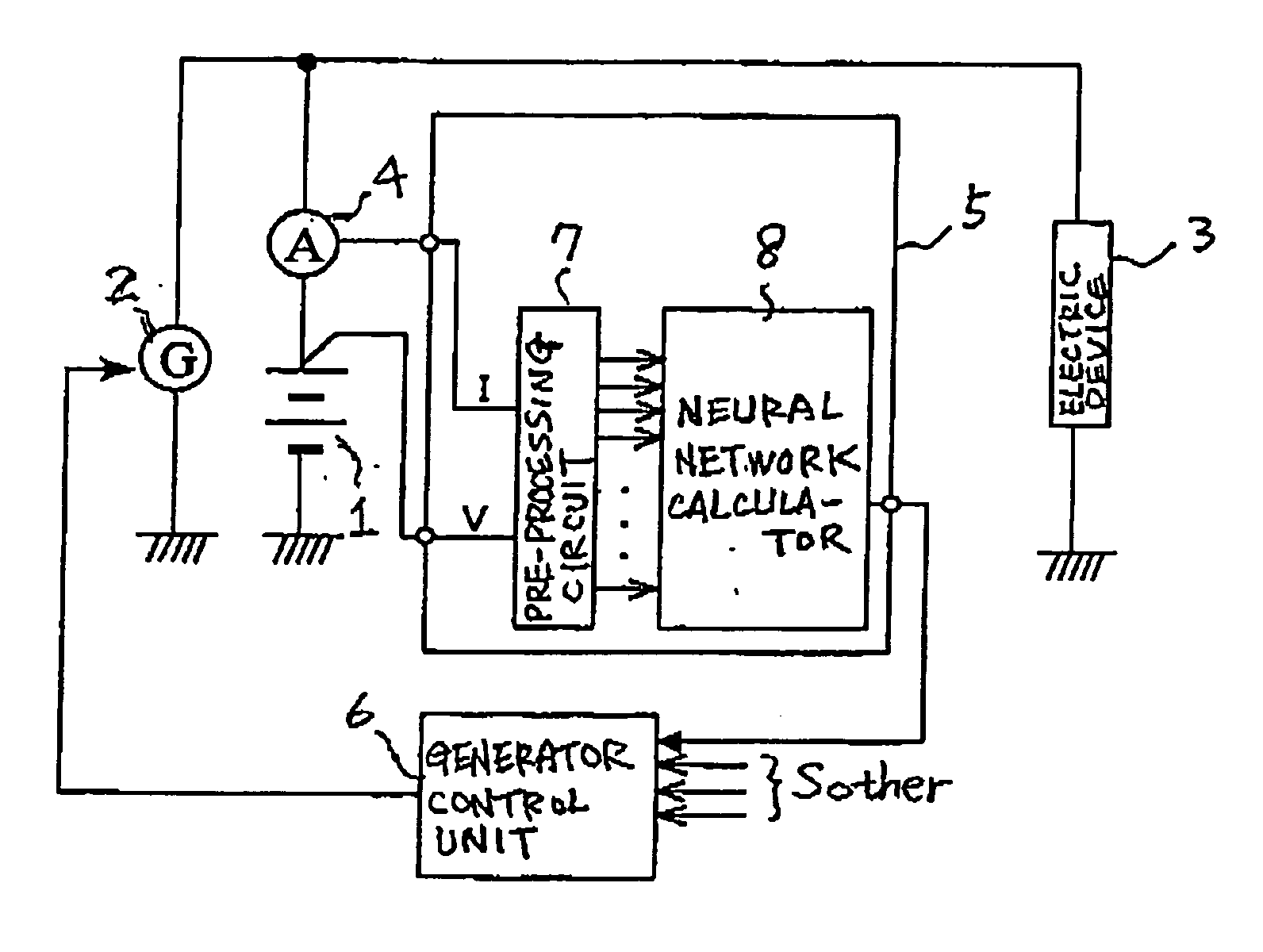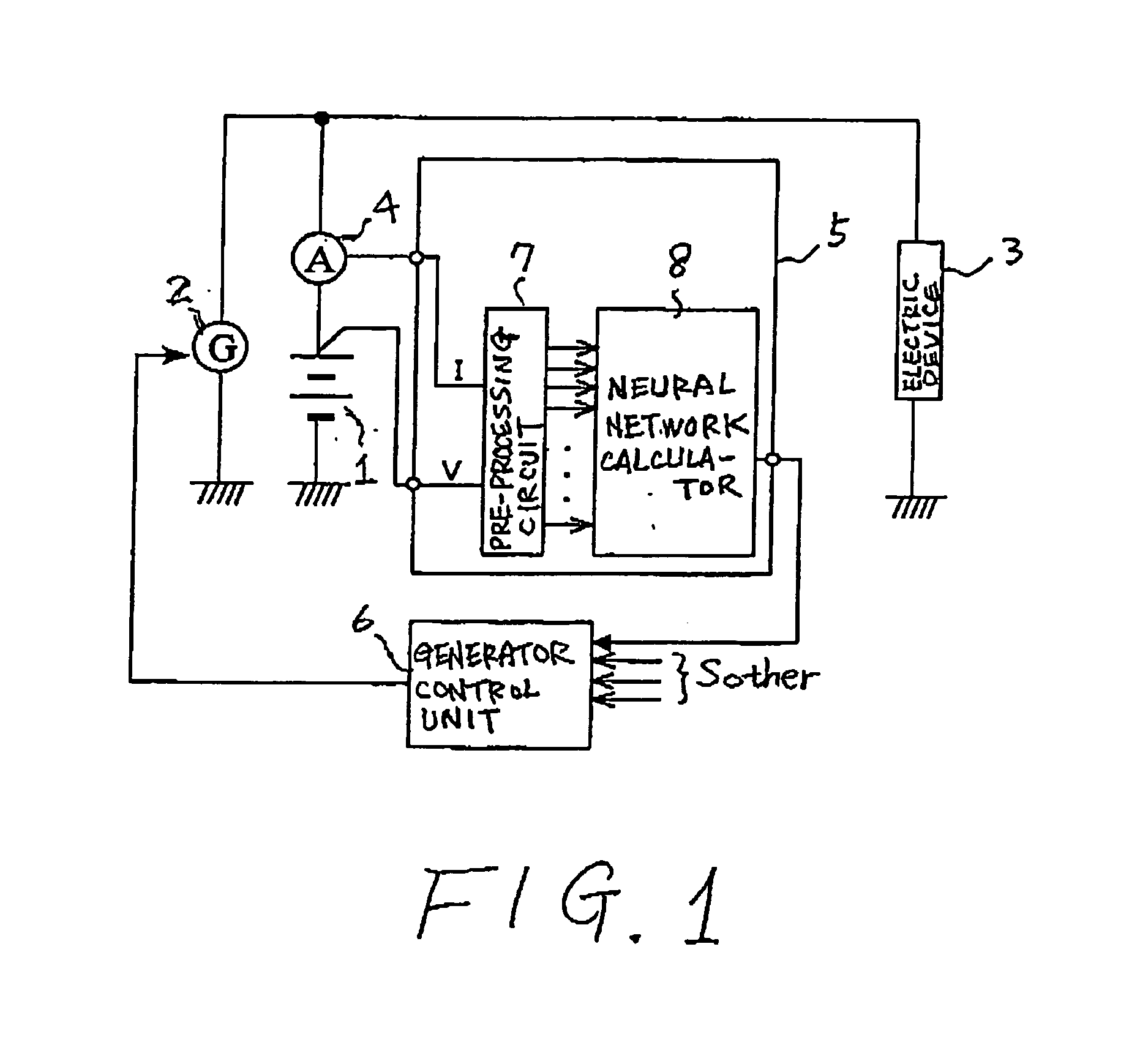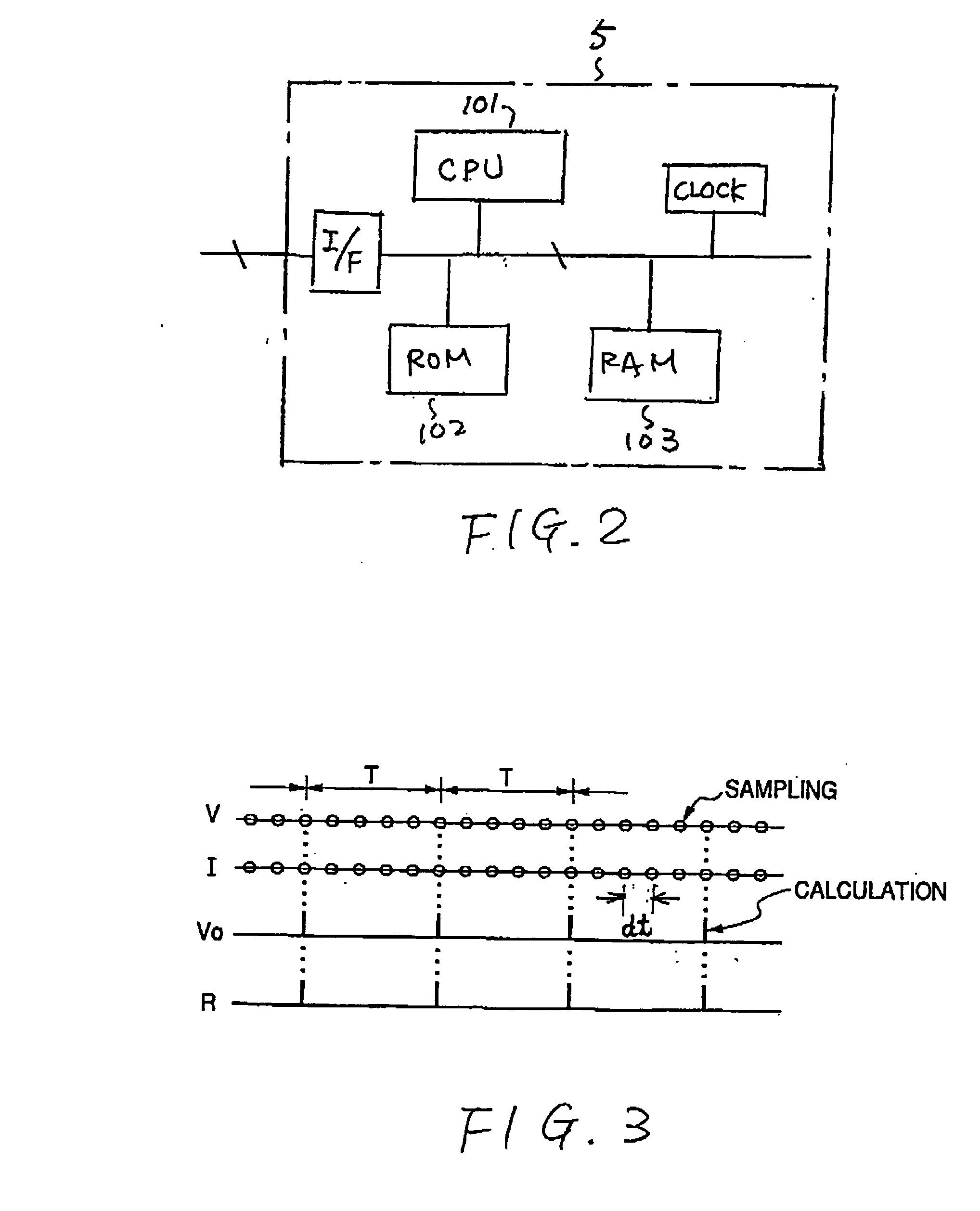Method and apparatus for detecting charged state of secondary battery based on neural network calculation
a secondary battery and neural network technology, applied in spark plugs, instruments, biological models, etc., can solve the problems of low detection accuracy, poor detection precision, and difficulty in detection, and achieve the effect of reducing the effect of polarization of the secondary battery, reducing the delay of calculation, and high detection accuracy
- Summary
- Abstract
- Description
- Claims
- Application Information
AI Technical Summary
Benefits of technology
Problems solved by technology
Method used
Image
Examples
first embodiment
[0052] Referring to FIGS. 1-14, a first embodiment of the on-vehicle battery system will now be described. This on-vehicle battery system is based on neural network type of calculation and corresponds to a battery system according to the present invention.
[0053] As shown in FIG. 1, the on-vehicle battery system is provided with an on-vehicle battery (hereinafter, simply referred to as a “battery”) 1 and other electric components including an on-vehicle generator 2, an electric device(s) 3, a current sensor 4, a battery state detector 5, and a generator control unit 6. Of these, as shown, the battery state detector 5 is equipped with a pre-processing circuit 7 and a neural network calculator 8 and may be, in part or as a whole, realized by either calculation on software installed in a dedicated computer system or functions of dedicated digital / analog circuitry.
[0054] The on-vehicle generator 2 is mounted on the vehicle to charge the battery 1 and power the electric device 3. The el...
second embodiment
[0093] Referring to FIGS. 17-25, a second embodiment of the on-vehicle battery system will now be described.
[0094] For the sake of a more simplified explanation, the identical or similar components to those in the first embodiment will be given the same reference numbers in the present second embodiment and succeeding embodiments.
[0095] The second embodiment is based on the fact that an internal resistance R of the battery 1 has also a high correlation with the current-integrated quantity Qx. Thus, both the internal resistance R and the current-integrated quantity Qx obtained in the latest calculation (measurement) period are combinedly introduced in the input protesters, so that a component of the latest current-integrated quantity Qx, which is included in the internal resistance R, can be reduced, that is, the influence of the polarization is reduced.
[0096] Practically, as shown in FIG. 17, in the second embodiment, the on-vehicle battery system is provided with a battery state...
third embodiment
(Third Embodiment)
[0101] Referring to FIGS. 25-38, a third embodiment of the on-vehicle battery system will now be described.
[0102] As shown in FIG. 24, the on-vehicle battery system of the present embodiment is provided with a battery state detector 5B functionally having a pre-processing circuit 7B and a neural network calculator 8A. The remaining circuitry of this on-vehicle battery system is identical to that in the first embodiment.
[0103] The pre-processing circuit 7B is configured to simultaneously sample, as paired data, at every given sampling interval dt (refer to FIG. 3), both the signal of voltage (terminal voltage) of the battery 1 and the signal of current (charge / discharge current) taken by the current sensor 4 for their storage. Using a predetermined number of paired voltage and current data which have been acquired during the latest predetermined measurement period of time for memorization (the data include currently sampled paired data of the voltage and current),...
PUM
 Login to View More
Login to View More Abstract
Description
Claims
Application Information
 Login to View More
Login to View More - R&D
- Intellectual Property
- Life Sciences
- Materials
- Tech Scout
- Unparalleled Data Quality
- Higher Quality Content
- 60% Fewer Hallucinations
Browse by: Latest US Patents, China's latest patents, Technical Efficacy Thesaurus, Application Domain, Technology Topic, Popular Technical Reports.
© 2025 PatSnap. All rights reserved.Legal|Privacy policy|Modern Slavery Act Transparency Statement|Sitemap|About US| Contact US: help@patsnap.com



